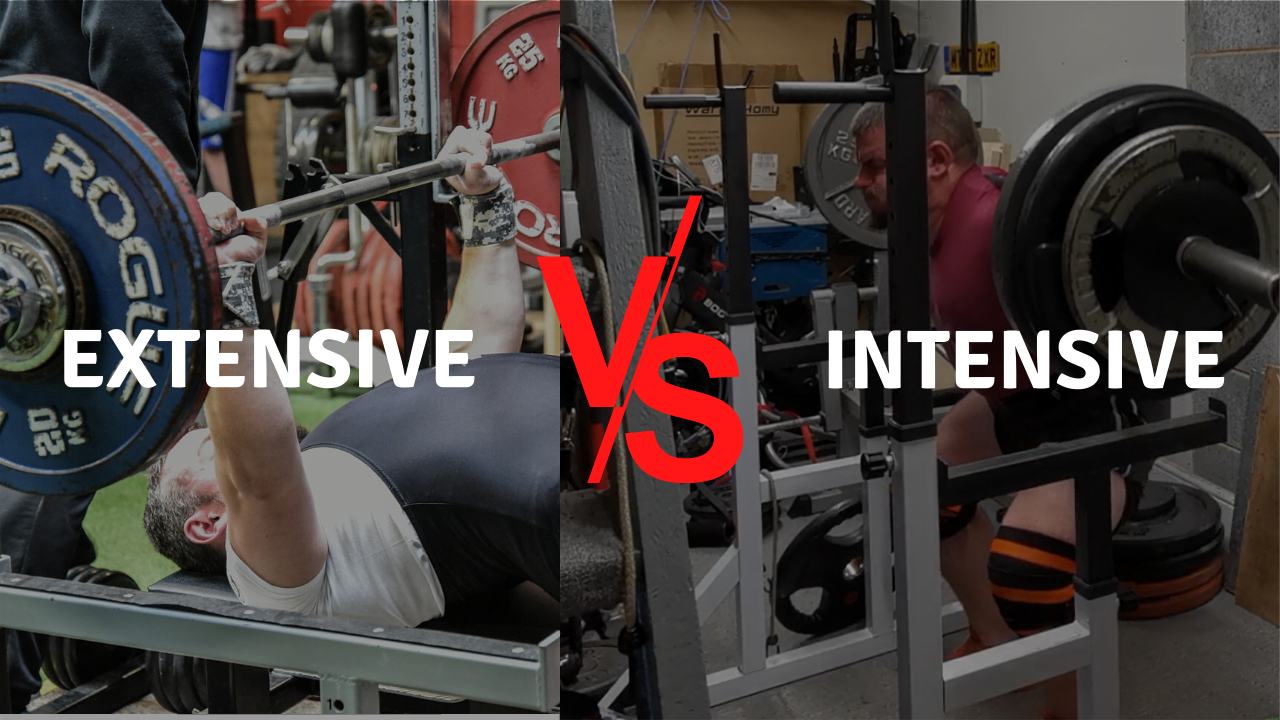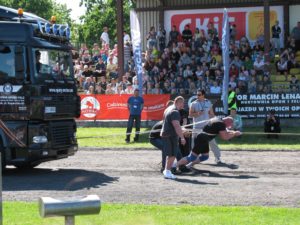Writing an exercise program can be a difficult thing to do – particularly if it’s a new task.
Whether you’re a coach or a trainee with an interest in how to write your own training – understanding the shift between extensive and intensive focus is a prerequisite before any decisions on loading schemes, exercise selection etc. are made.
WHAT?
Learn the topic.
What is Extensive Training?
This essentially refers to creating a base.
A foundation of training in which you cover a large variety of movement patterns, different fitness components and build “multi-modal capacity”.
Rather than isolating your focus to one specific thing you’re aiming to improve (e.g. decreased body fat, increased max. strength etc.) – You train everything all at once.
What is Intensive Training?
Intensive training refers to specialisation.
Transitioning your training program towards one specific goal, and reducing (or in some cases, completely eliminating the rest.
You are working towards being an “athlete” and forming an “athletic base”.
Every single periodization model you will come across – follows this philosophy.

WHY?
Learn the science and theory.
Understanding Extensive
Extensive training can also be referred to as:
- Off-Season
Something people are often familiar with – but think it doesn’t apply unless you’re a professional athlete.
This isn’t the case.
Extensive Training is centred around the notion of Intent.
There is a purpose behind everything you do, beyond simply the weight that is lifted, the speed you run at etc.
And the goal tends to be more qualitative in nature – let’s look at a few examples:
EXTENSIVE GOAL | WHY? |
|---|---|
Improving Deadlift Mechanics | Better leverages / optimal biomechanics. Safer position to lift from. Potential for Heavier Weight to be Lifted. Greater efficiency. |
Improved Stride Length | Increased running efficiency. Decreased energy expenditure. |
Nutritional Consisitency | Stable calorie intake. Pattern recognition for relapsing. |

Understanding Intensive
Intensive training, on the other hand, can also be referred to as:
- In-Season
And this is centred around the notion of Expression.
The focus is placed heavily on output and actualising your improvements in the extensive block.
Let’s take a look at a few examples:
INTENSIVE GOAL | WHY? |
|---|---|
Deadlift 1RM | |
5km Time | |
Decreased body fat |
And although neither are mutually exclusive (i.e. you don’t completely ignore positioning during the intensive phase) – when writing an exercise program, you shift your emphasis from one to the other.
Link to De-Training
This concept is particularly relevant when we’re looking at writing an exercise program for detraining and retraining after a lay-off.
We know the detraining period affects qualities that have shorter SRA Curves, such as muscle endurance, fatigue resistance and skill strength.
DE-TRAINING PROGRAM
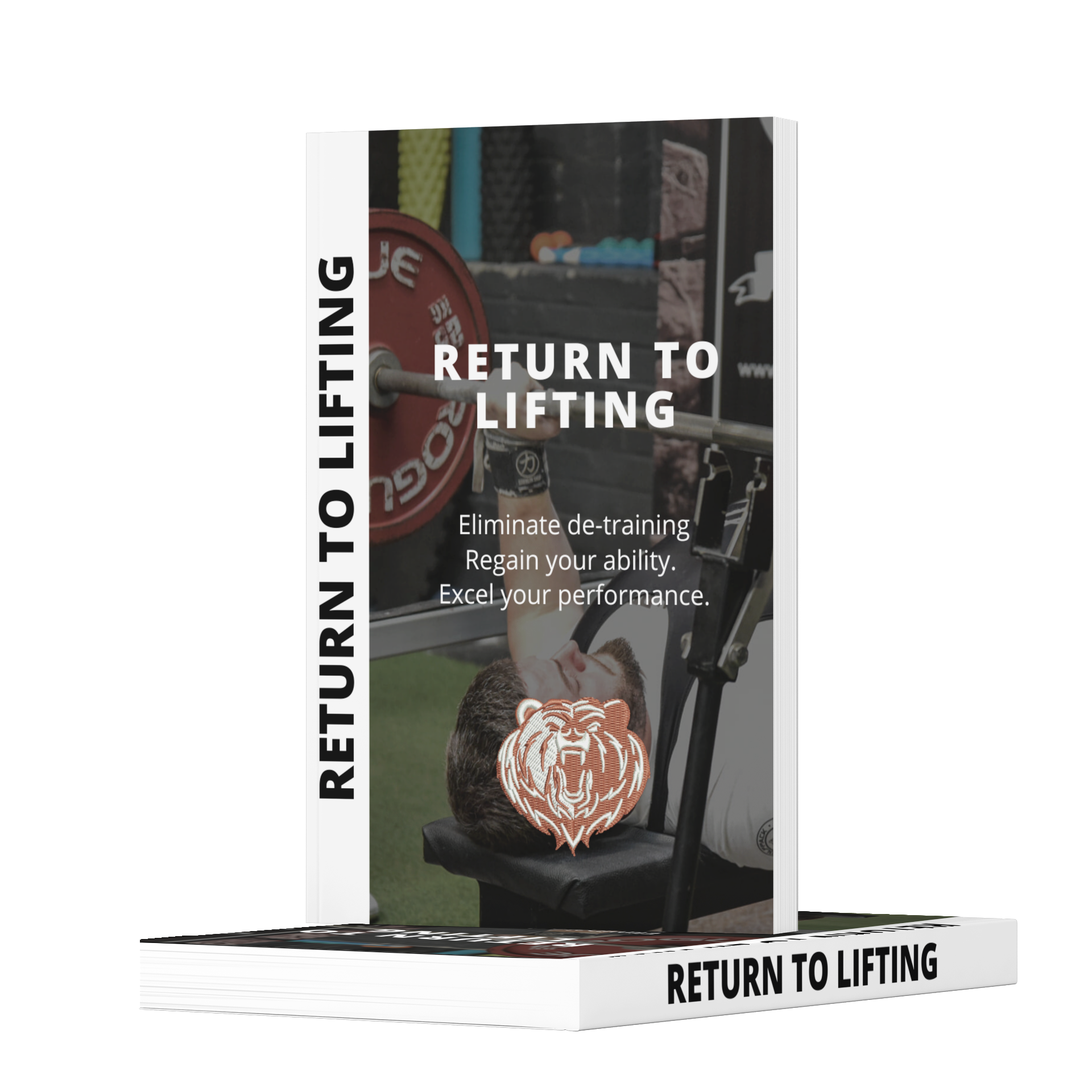
Head here to gain access to our Brand New Training Program -
Return to Lifting
4 Weeks of Training to Maximise the Re-Training Effect
2 E-Books: The Science of Detraining / The Science of Retraining
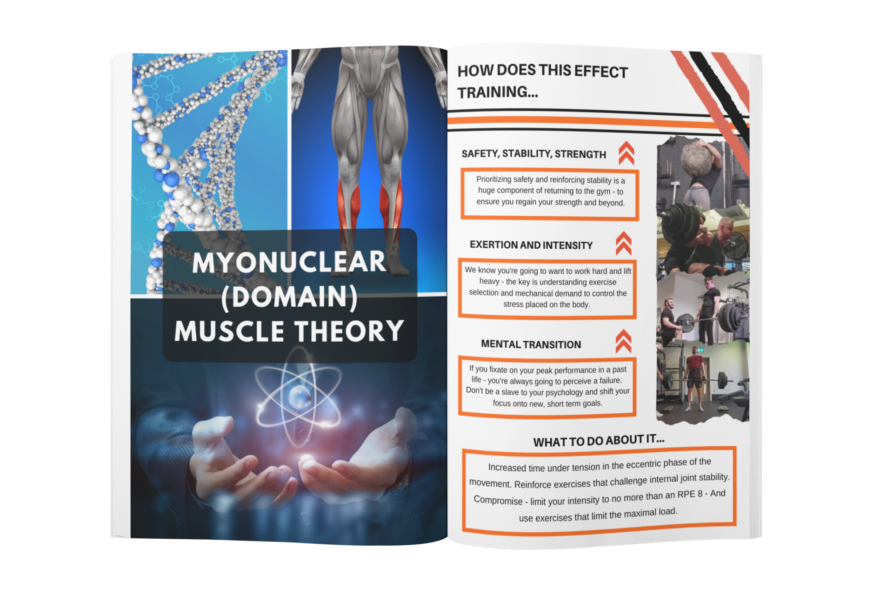
Most, if not all of these qualities govern your body’s ability to tolerate load. And the training that your body can handle.
And, when writing an exercise program, aiming to improve strength, where do each of these attributes lie?
In the Extensive Block.
None of them directly, improve your strength – nor do they provide immediate gratification of your hard work.
However – they create the foundation to be able to express your strength.
What Most People Want…
Most people crave immediate gratification. Whether in training, their job, relationship… it’s a struggle that a lot of people have.
As a result, when writing an exercise program – people are only concerned with the Intensive Training – as this gives us what we crave.
It’s easy to feel how training your squat, improves your squat.
But it’s harder for some people to create the tangible link between the leg press/leg extensions (giving you a larger cross-sectional area) and squat 1RM.
However, the unfortunate reality is that almost all the goals that you will work towards – requires delaying gratification.
HOW?
Learn the implementation.
How Much of Each?
When writing an exercise program, a key factor you will have to decide – is how much time you spend training intensively vs. extensively.
How much time you spend in each phase depends on two main things:
- Who You Are as an Individual
- What Type of Goal You Have
Who Are You? Individuality
As we’ve discussed before – the 3rd Law of Training influences all aspects of training – and it’s no exception here.
Depending on who you are – will influence how much time you spend in each area.
Types of Motivation
Internal Motivation – This is characterised by someone’s internal dialogue. People who are internally motivated, tend to put in the work for themselves, with more interest placed on internal satisfaction as opposed to the consequence of their work.
These people typically don’t need external factors to train.
External Motivation – This is characterised by a focus being placed on the result of someone’s work. For example, a competition position/placing, or even recognition by someone else (e.g. a coach).
Now, there is no “right” way to be. For some reason, we have a tendency to glorify internal motivation – as there is a correlation between internal motivation and success.
But the simple fact is, a correlation isn’t causation.
And there are also several successful people who are externally motivated – particularly in the athletic world.
The key is to understand which you are biased towards – and lean into it. It’s a hard-fought battle to go against your psychological makeup.

What Type of Goal?
Deadlines / Urgency
If you set out your stall and start working towards a goal 16 weeks + in advance – then you can spend much longer in an extensive phase.
As a general rule of thumb – the more time you can spend in the extensive region – the better.
This will allow you to drill weaknesses – fix holes in your game and overall, make yourself a better athlete.
If however, you need to perform or reach your potential and express your output soon – then you need to spend more time in an intensive block.
When your focus is peaking your strength and dealing with the psychological focus it requires – you don’t want to try to relearn the movement at the same time.
EXAMPLES
Let's take a look at a few...
Marathon Runner
Profile | Experience Level | Goal | Time / Deadline |
|---|---|---|---|
Malcolm | Novice | Complete a Marathon | 24 Weeks |
In this scenario – our friend Malcolm has the luxury of time – meaning he can split his training into both extensive and intensive work – And get a decent amount of work done for each.
Now there are obviously, endless combinations you can implement to bring about adaptation – but based on the criteria above, we would look at the following (after a Needs Analysis has taken place).
Block | Aims / KPIs | Training Prescription |
|---|---|---|
Extensive Weeks 1 - 8 | Improve Lower Body Strength. Strengthen Connective Tissue. Correct and Improve Postural Position. | Begin with Simple Lower Body Movements that provide overload (e.g. Goblet Squat) and increase intensity. Introduce exercises that progress in complexity & improve mobility ready for next phase. Progressive volume with postural muscles to correct imbalances - using isolation exercises. |
Intensive Weeks 9 - 12 | Run smaller distances with a focus on improving time. Improve confidence. Needs Analysis to inform next stage. | Remove exercises with higher complexity. Reduce overall volume of strength work - focus on compound lifts. Pick set distance and focus on improving time only. |
Extensive Weeks 13 - 20 | Build Running Volume to a Peak. Strengthen Movements "Specific to Running" Overload compound movements. | Reduce isolation exercises and prioritise compound movements with higher mechanical demand. Build strength in the unilateral and triple extension patterns. Overload running volume with frequency first, per session volume 2nd. Use varying distances throughout. |
Intensive Weeks 21 - 24 | Peak Running and Initiate Taper. Prioritise recovery of connective tissue and muscle to peak performance. | Reduce strength work to 2 primary exercises (e.g. Split Squat and Stiff Leg Deadlift) - Remove final 2 weeks. Chosen taper method to promote recovery. |
Strongman
Profile | Experience Level | Goal | Time / Deadline |
|---|---|---|---|
Jessica | Intermediate | Strongwoman Contest | 12 Weeks |
In this scenario – athlete Jessica has 12 weeks to build up to a strongwoman competition, with the following events listed:
- Log Press – Max Reps in 60 seconds
- Loading Medley – 2 x Kegs + 1x Sandbag
- Silver Dollar, Axle Deadlift – Max Weight
- Viking Hold – Max Time
- Atlas Stone Over Yoke – Max Reps in 60 secs
A lot of work needs to be done.
So how do we create the plan? Same as before.
The only difference in this scenario, is the amount of time we can spend in each block. Jessica, coming off the back of one competition, doesn’t have the luxury of a huge build up, however – there is still extensive training that can be done to maximize her performance.
Block | Aims / KPIs | Example Training Prescription |
|---|---|---|
Extensive Weeks 1 - 4 | Log Press - Strengthen Clean + Improve Overhead Stability Loading Medley - Build Aerobic Base/Recovery Rate + Efficiency of Handling Implements Deadlift - Strengthen posterior chain specific to top of strength curve. Viking Hold - Improve lactate tolerance of deltoid muscles and anterior chain. Atlas Stone Over Yoke - Improve triple extension power output | Log Press - 2 - 4 Cleans For Every 1 Press. Loading Medley - Steady State Cardio / Using Active Recovery between sets. High Volume Light Carries. Deadlift - Stiff Leg Deadlifts + Glute Ham Raise/Nordics/Inverse Curls. Viking Hold - High rep work frontal raises + weighted planks. Atlas Stone Over Yoke - Jump Shrugs/High Pulls/Barbell Hip Thrusts + Light Stone Work |
Intensive Weeks 5 - 8 | Log Press - Building Log Specific Strength and refining movement efficiency Loading Medley - Building Lactate Tolerance + Foot Speed Deadlift - Strengthen postural stiffness + strength at target range. Viking Hold - Improve lactate tolerance of deltoid muscles and anterior chain. Atlas Stone Over Yoke - Improve atlas stone strength. | Log Press - Floor to Overhead Work - Increasing Load. Loading Medley - Loading Medley Work / Split into 2 Sessions (1 Light for Speed - 1 Moderate for Endurance). Deadlift - Functional Isometric Deadlifts (At Specific Position) and Block Pulls. Viking Hold - Positional Isometrics, Continue to Improve Endurance. Atlas Stone Over Yoke - Atlas Stone Loading (Undulating - Heavy) and 2nd Session continuing with triple extension work. |
Intensive Weeks 9 - 12 | Log Press - Maximise efficiency at/close to comp weight. Loading Medley - Maximise speed at/close to comp weight. Deadlift - Overload strength at comp height, at/close to comp weight Viking Hold - Overload static strength endurance, at/close to comp weight. Atlas Stone Over Yoke - Maximise efficiency at/close to comp weight. | Log Press - Floor to Overhead Work - Increasing Load. Loading Medley - Loading Medley Work / Split into 2 Sessions (1 Light for Speed - 1 Moderate for Endurance). Deadlift - Functional Isometric Deadlifts (At Specific Position) and Block Pulls. Viking Hold - Positional Isometrics, Continue to Improve Endurance. Atlas Stone Over Yoke - Atlas Stone Loading (Undulating - Heavy) and 2nd Session continuing with triple extension work. |
Summary
The examples above certainly aren’t set in stone – as there are endless combinations when writing an exercise program. The key is to understand the direction of your training.
When looking to build strength, far too many people become narrow-minded, with tunnel-vision focus on lifting weights being the only thing that matters. As a result, they neglect the other facets of performance that truly allow you to peak your performance.
Understanding the divide between extensive and intensive focus will allow you to improve these areas, without losing sight of your number one goal –
To Build Superhuman Strength.
UNSHAKABLE STRENGTH
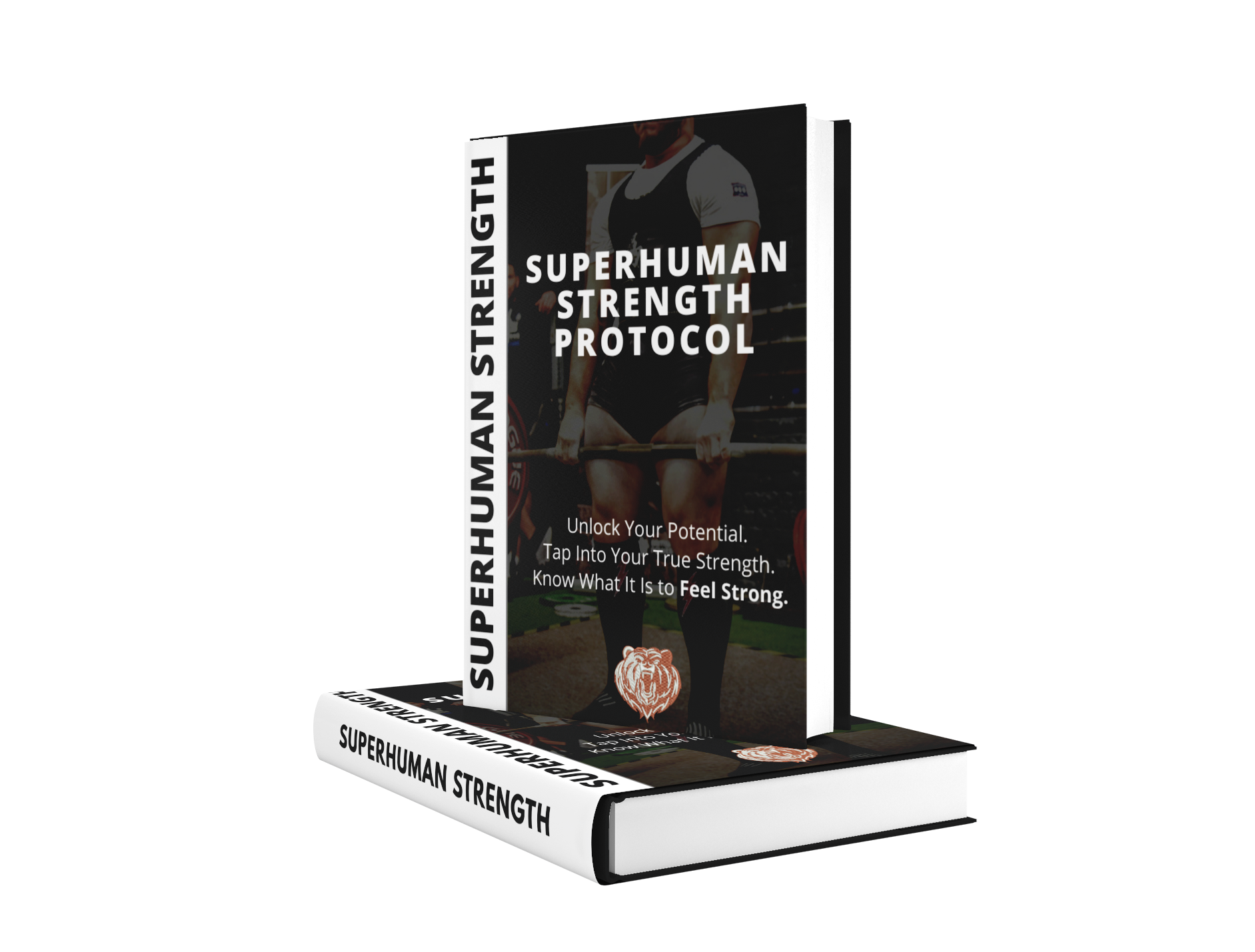
Head here to gain access to our Brand New Training Program -
The Unshakable Strength Protocol
Unshakable Strength Science - Guide to Isometrics.
12 Week Complete, Customizable Training Program.
Exercise Tutorial Database.



